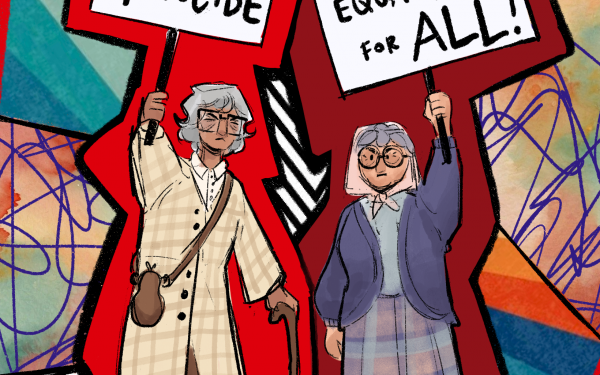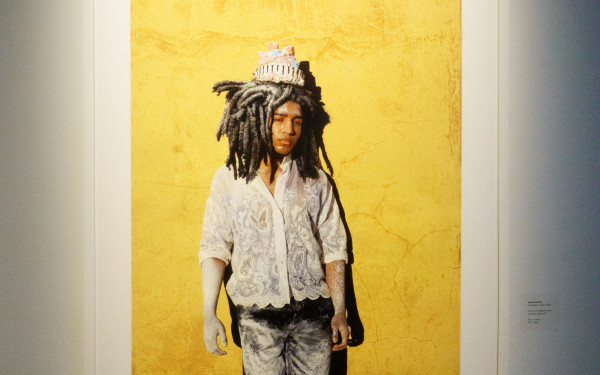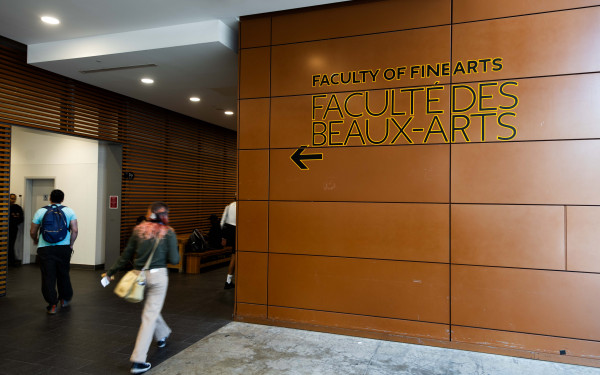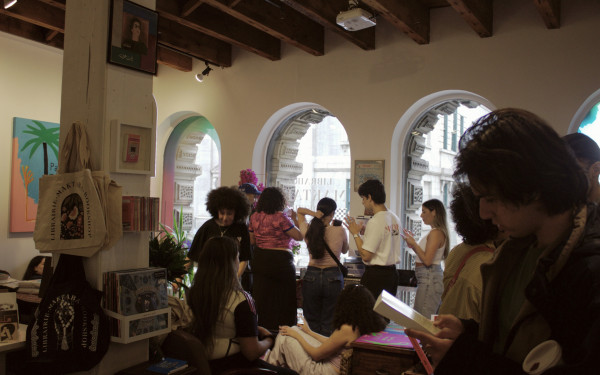Tatreez, a tactile draft of Palestinian heritage
Tatreez protects Palestine’s history from erasure by the Israeli occupation
On her ninth birthday, Cristina Zoghbi received her first embroidery kit.
She recalls rushing straight home from school, eager to reunite with her thread and needle. Eyes glued to the fabric and back hunched over the table, “it was the beginning of a love story,” she says. For hours, her hands would meticulously stitch new designs.
Zoghbi has been experimenting with forms of art throughout her life, but recently found her way back to tatreez. Every time she pushes the needle through the fabric, Zoghbi is reminded of her ‘teta,’ or grandmother, who introduced her to it. The few memories she has with her teta are embroidered through traditional motifs that speak to their Palestinian heritage.
Tatreez—the Arabic word for cross-stitch—refers to a type of traditional Palestinian embroidery. Much like the history of its people, tatreez is, at its core, an embodiment of resilience.
“Tatreez tells a story,” Zoghbi says.
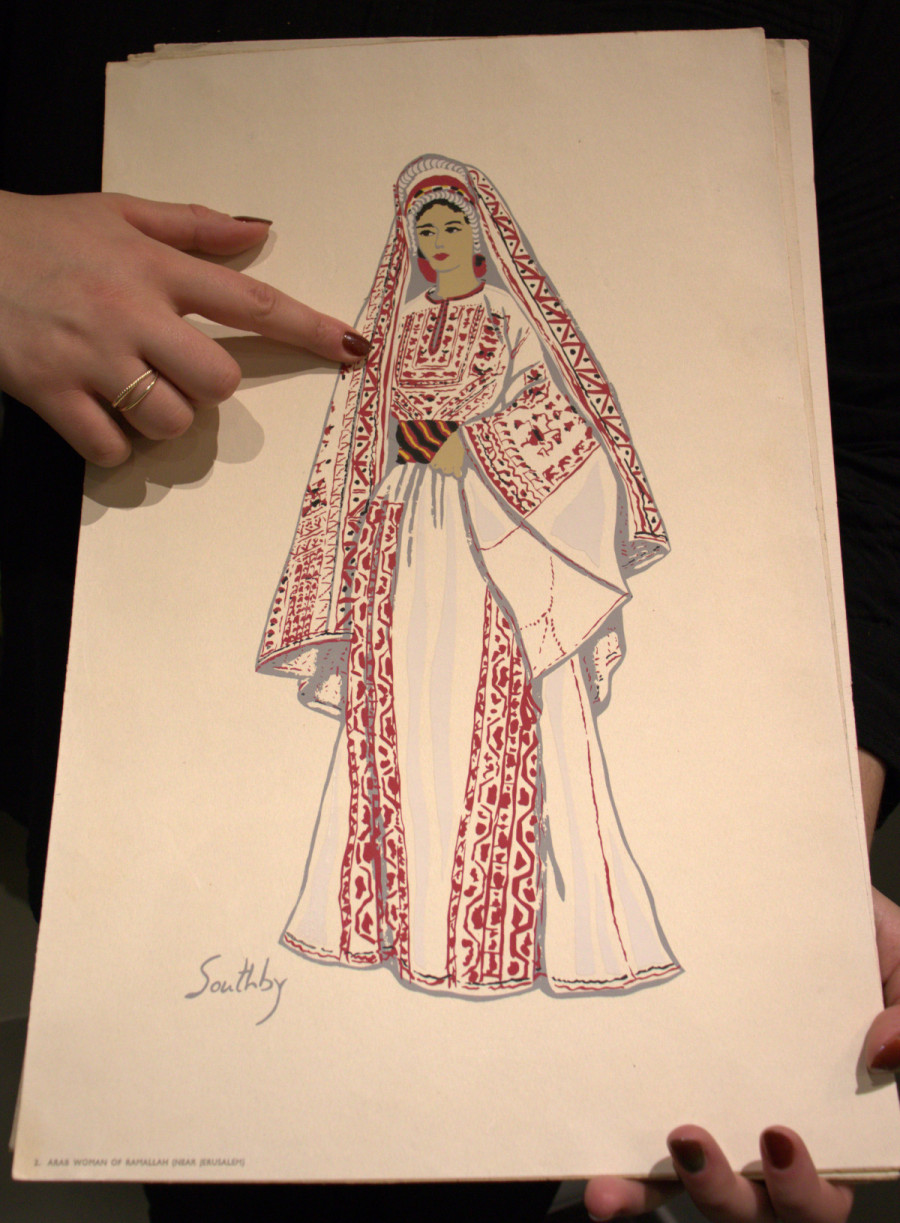
Throughout its century-long practice, the craft evolved as Palestinian cities began developing signature motifs, such as the star of Bethlehem.
“These motifs have been around for centuries,” Zoghbi says. “We’re bearing witness to the land. Some people record it, some people photograph it, we tatreez it.”
Some patterns, like the cypress tree, appear in several regions. Despite slight variations, the tree is always depicted with roots.
“It signifies the resilience of the Palestinians, how straight and strong it is,” Zogbhi says. “It's also [a symbol of] attachment to the land.”
Aside from the design, the colour of the thread is also symbolically significant. Red was associated with love, passion and strength. Black signified hardship and mourning.
The placement of motifs also has importance, Zogbhi explains.
“The inversion of motifs started with the British mandate. They came in and started destroying everything. With this destruction of nature, a lot of the symbols became inverted,” she says. “A lot of times on the same dress, you'll find inverted and upwards [designs], meaning that eventually whatever was destroyed is going.”
The tradition remained alive as mothers passed down their knowledge to their daughters.
However, following the Palestinian Nakba in 1948, when over 700,000 Palestinians were forcefully expelled from their homeland, the practice of tatreez was hindered. Thread became expensive and more difficult to acquire through checkpoints. Colours became scarce.
While tatreez usually consisted of embroidering larger projects like thobes and dresses, displacement and occupation meant this was no longer viable. Women began stitching smaller pieces, like bookmarks, earrings and belts, to ensure tatreez was not lost.
Tatreez survived as grandmothers taught their granddaughters, staying true to its “very matriarchal nature,” as Zoghbi puts it.
The practice of tatreez remains persistent in occupied Palestine and across the globe. In Montreal, every other Friday, community members are invited to the Canadian Palestinian Foundation of Quebec (CPFQ) for an evening of tatreez, with a side of tea and biscuits.
The CPFQ is a registered charity in Canada that has been running several programs in occupied Palestine since 1988. They work with organizations on the ground to sponsor orphaned children and their caretakers in the West Bank and Gaza.

The CPFQ also started the Gaza Food Program, which has been operating in the south of Rafah, Gaza, for the past 16 months. The goal is to ensure that people, especially displaced families, are getting hot meals.
The tatreez circles were an idea of Tala’s, an employee at the CPFQ, whose last name will not be disclosed due to privacy reasons.
Tala has always been crafty. She used to attend weekly knitting circles with a group of ladies whom she still sees every once in a while. However, since the beginning of Israel’s genocide on Gaza in October 2023, she has felt the need to be around her own community.
“I wanted to provide a space for people like me to be amongst other members of their community, and also teach this craft, preserve it and make sure we honour it,” Tala says.
Zoghbi says that sentiment was shared outside of the Palestinian diaspora, too, as people became aware of the genocide.
“A lot of non-Palestinians came forward,” Zoghbi says. “They felt helpless and were like, ‘What can we do?’”
Tala says that the tradition reflects resilience.
The year 2000 marked the beginning of the second Palestinian Intifada, a five-year-long uprising against the Israeli occupation. During this uprising, Palestinians began cross-stitching the Palestinian flag and the word ‘Falasteen’—transliteration for Palestine in Arabic—on it, because they were prohibited from carrying the flag, its colours, or even saying that they were Palestinian.
_900_601_90.jpg)
“For them, [tatreez] has been decorative and a form of resilience,” Tala says. “They are defying the conditions placed upon them.”
Zoghbi adds that tatreez is directly tied to the Palestinian fight for cultural survival.
“Whenever there's an [uproar] in violence, then more people are like, ‘We need to learn.’ That's our way of dealing with it, [of] processing what's going on,” Zoghbi says.
For Tala, the importance of preserving Palestinian culture stems from the fact that Palestinians’ identity and connection to their land and history are often questioned.
She explains that women in Palestine used tatreez to translate everything in their environment, including trees, flowers and birds, into a cross-stitch motif and embellish their clothing, couches and pillows. One motif even illustrates frying eggs in a pan.
“[Tatreez patterns] are sort of geographically constrained. Certain villages will practice a certain type of motif that other villages won’t,” Tala adds. “Over time, it became blended, but historically, it was clearly delineated. For us, it signifies a strong connection to the land. There’s been a connection to our identity for generations.”
The preservation of tatreez nowadays is also being met with various challenges, said Tala.
“People think it’s for grandmas. They don’t understand the significance behind it,” Tala says.
Furthermore, the commercial exploitation of tatreez by businesses without the crediting or compensation of Palestinian artisans has not been uncommon. There are several cases in which tatreez motifs have been used without highlighting them as significant cultural expressions.
For Tala, showing that these crafts have been passed down by mothers to their daughters for generations is a way of empowering Palestine’s legacies.
Friday night tatreez circles at the CPFQ are open to people of all backgrounds, whether they have little or extensive knowledge of the craft.
Inès Chamaa, an environmental science student at Concordia University, attends the circles as often as she can. She learned tatreez over a year ago, through a workshop hosted by Students for Palestine’s Honour and Resistance McGill.
Now, Chamaa runs her own small business where she sells jewelry and commissioned tatreez pieces.
Chamaa says these circles help her stay grounded.
“There’s been a lot of tumultuous emotions and helplessness that a lot of people in the Montreal community have felt,” Chamaa says. “Being able to come together in little tatreez circles, talk, have some tea and cookies, is really rewarding.”
For Chamaa, keeping traditions alive plays a major role in furthering the Palestinian cause. She resonates with the idea that while it is important to focus on the sufferings and injustices Palestinians are enduring, the richness of their heritage should be uplifted as well.
“Tatreez is a way of bringing alive Palestinian joy,” Chamaa adds.


_600_832_s.png)

